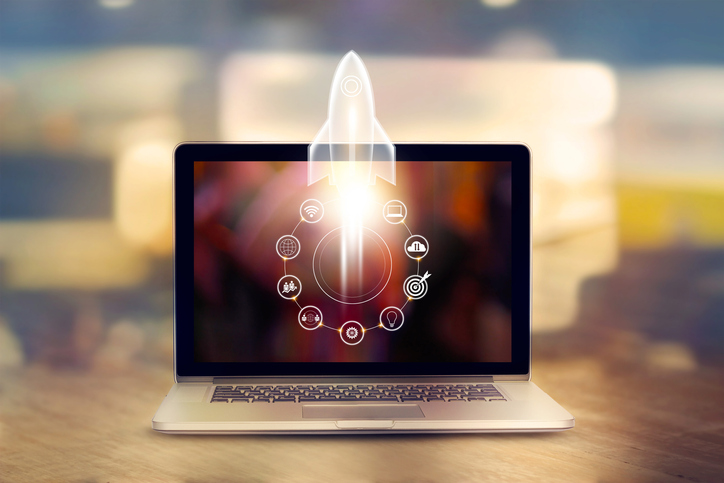
by Felicien | Mar 26, 2019 | Education
Living in a technology era that sees device upgrades and new products on what seems like an almost weekly basis, it’s difficult to imagine that Windows 7 has remained in play since its release in 2009.
According to Net Market Share’s December 2018 data, 40.86 percent were still using Windows 7 compared to a modest 36.37 percent engaged in Windows 10. Trailing the two leaders, Windows 8.1 saw a mere 5.07 percent and Windows XP stood at 4.08 percent. That means Windows 7 ranked as the most popular platform after a decade on the market.
However, the days of Windows 7 are numbered. Starting on January 14, 2020, extended support for this industry favorite will cease.
The Windows 7 end of life (EOL) is not a surprise for IT companies because Microsoft already cut off mainstream support four years ago. The imminent Windows 7 EOL leaves small and mid-sized companies weighing their options about the best next steps. Fortunately, the IT professionals at {company} are prepared to upgrade small and mid-sized businesses using Windows 7 to a suitable alternative.
Are You Prepared To Upgrade Before Windows 7 EOL?
While the EOL deadline may seem miles away when considering critical day-to-day business operations, conducting a critical systems analysis and reviewing next steps options is something that decision-makers would be wise to implement post haste.
Upgrading a company’s operating system is no small undertaking. The process could take a top-flight IT support team upwards of six months to develop a comprehensive strategy to test, implement and fully deploy the new system. That timeline hinges on prior decisions being made and only reasonably anticipated setbacks. Anyone who runs a business understands that x-factors can cause unexpected and costly delays.
CEOs and decision-makers who fail to make the shift before the Windows 7 EOL date risk losing security features currently protecting systems and data. We live in a world where hackers are persistent in their efforts to find vulnerable business systems that they can pluck like low-hanging fruit.
It’s not difficult to recognize that hackers are fully aware of potential vulnerabilities when the Windows 7 sunsets. They will be up all night identifying and breaching systems with inadequate security. Think of the Windows EOL date like a massive power blackout and hackers are like looters taking advantage of the crisis to break into your business and steal. The best way to avoid disruption and cyber theft is to take proactive measures now.
Positives About Upgrading From Windows 7
For all practical purposes, users are being forced to migrate from Windows 7 to another product. The mainstream support ended in January 2015 and extended support included some minor reductions in support. While it’s true that you can still use Windows 7 and it will function with Internet Explorer and other tools, after the 2020 EOL date, security risks will likely escalate without ongoing support. While business leaders often operate under the “if it’s not broken, don’t fix it” theory, Microsoft reportedly recommending that Windows 7 users upgrade to Windows 10 is not necessarily a bad thing for small and mid-sized companies. These are key reasons why change can prove beneficial.
Improved Consistency: In the past, it wasn’t uncommon for operating systems to require significant changes every three to five years. That type of stress is expected to dissipate once users conclude their migration from Windows 7 to Windows 10 or another appropriate option.
Ongoing Upgrades: Although Microsoft has offered differing degrees of Windows 7 support for 10 years, organizations that migrate to Windows 10 can anticipate a wealth of helpful upgrades. These upgrades started in 2018 and their lifecycles will reportedly last upwards of 24 months in terms of deploying and validating the newest version. Updates that were previously released about every six months. However, organizations may want to task their IT support team with monitoring emerging upgrades.
Your outfit will enjoy the most up to date functionality, productivity, user interface, and outstanding security measures. Upgrades have the potential to interact with important analytics, machine learning, and other emerging technological advancements.
At {company}, our team of IT professionals understands the inherent benefits that migration to Windows 10 and other options can bring to the table. Migrating to Windows 10 or a suitable alternative is not a nuisance; it’s a business opportunity.
Windows 7 EOL Presents An Opportunity To Develop A Uniform Process
Consider for a moment that your organization has developed protocols and processes that help it maximize productivity and profitability. Those might include anything from a manufacturing assembly line to information sharing to HR policies. Just about everything a successful outfit does helps improve its standing and bottom line. That being said, systems upgrades are no different and the Windows 7 EOL has presented an opportunity to create uniform policies and protocol.
By working with an IT support consultant, your organization can lean on the experience of a team that upgrades and migrates business systems regularly. You also gain the benefit of working with team members that have an expansive knowledge about goals within your industry and others. That information can prove valuable when applied to your niche.
Conducting a full review and documenting real-time process leaves your organization with a blueprint for future upgrades. Windows 7 is effectively going the way of the dinosaur and its replacement will likely go extinct as well. It’s important to seize this opportunity to reduce the six-month or longer process the next time. These are other benefits your organization can gain by creating a regular upgrade process in 2019.
Rethinking Windows: It’s all too clear that Windows upgrades are already being planned. Rather than wait and react every time an announcement is made, you can rethink Windows as an ongoing service and not just a product. This means empowering your IT support team to maintain a focus on rollouts, tool management and deployment in a highly streamlined fashion. Having that blueprint means formerly onerous tasks occur seamlessly.
IT Support Agility: A significant migration from Windows 7 is likely to be a time-consuming task. Part of the reason is that your outfit is starting from scratch and learning about unique aspects of your system, goals and workforce needs. Creating a blueprint for future upgrades eliminates that start from scratch mentality and allows IT support technicians the flexibility to act decisively.
Ongoing Testing: Once your IT team has concluded its testing measures for the Windows 7 EOL migration, it’s essential to craft a post-mortem account of challenges and solutions. This will help inform team members about what to anticipate and improve their ability to adapt and overcome.
One of the expected benefits of moving to Windows 10 is that the product allows IT technicians to implement updates to a variety of devices simultaneously. This is expected to improve efficiency by limiting the time spent on tasks that are not directly related to your business’ profit-earning activities.
Other Windows 7 EOL Options
There’s a good reason that such a low percentage of users work with Windows 8. It was widely considered a disaster. According to The Inquirer, “Users and administrators adamantly demanded to step back to Windows 7 desktops. Not only was the new user interface of Windows 8 unwelcoming, but the removal of simple features such as the Start button sent users into a tizzy.”
The piece goes on to explain that although users freaked out over the Windows 8 product, migrating to a user-friendly Windows 10 option could be favorable.
“Adopting Windows 10 can be as simple as upgrading an existing Windows 7 computer based on your Microsoft licensing agreement, but in many cases, a device refresh may be necessary due to hard drive space, system resources or physical capabilities,” The Inquirer article states. “From a financial perspective, the cost of a new computer — plus IT staff setup time and lost user productivity during the transition — comes at a significant price.”
But there are other options on the market that decision-makers may want to consider. These include the following.
Apple Devices: If Macs appear a more suitable product for your evolving business goals, the Windows 7 EOL may offer a logical time to transition.
BYOD: Some companies are shifting to “bring your own device” workforces. Again, this may be a time to discuss the possibility with your IT consultant.
Although migrating to Windows 10 is expected to be a reasonably positive transition, there’s little argument that Windows 7 was a solid product. It continues to be a highly regarded operating system and some business leaders may want to consider the possibility of working with the product beyond the 2020 EOL date.
It may come as something of a surprise, but Microsoft reportedly may provide support for some organizations beyond the 2020 EOL date, according to The Inquirer, Computer World, and others.
Called Windows 7 Extended Security Updates (ESU), the after-drop-dead deal will add support through January 2023, according to Microsoft. “While many of you are already well on your way in deploying Windows 10, we understand that everyone is at a different point in the upgrade process,” Computer World reported.
Additional Windows 7 support is expected to be sold on one-year deals and businesses can expect to pay a premium. The move is viewed as a costly stop-gap measure for organizations that are falling behind a reasonable migration timeline.
Organizations that have not already begun the process of migrating from Windows 7 to Windows 10 or another suitable option are strongly advised to contact an IT professional ASAP. Delaying the inevitable could prove expensive one way or another. {company} has a team of knowledgeable migration consultants and specialists with the hands-on experience to see your outfit through this challenging period.

by Felicien | Mar 26, 2019 | Education
Did you know? Microsoft is ending support for Windows 7 in January 2020. Beginning this April, Microsoft will start displaying pop-ups on all Windows 7 computers alerting the users that their support for Windows 7 will be ending.
Don’t be alarmed. Microsoft also did the same thing with Windows XP before shutting down their support for the Windows XP Operating System.
Read More
{company} is in the process of discussing upgrade options with every one of our clients and local companies. We’d like to schedule time with you to discuss your options. Feel free to connect with us by calling {phone} or sending an email to {email}.
![[VIDEO] What Is The Cloud?](https://compnetsys.com/wp-content/uploads/2019/03/GettyImages-952984968.jpg)
by Felicien | Mar 25, 2019 | Education
While you hear the term frequently and see the images of puffy whiteness illustrating the concept, you may still be wondering, “What is the cloud?”
Despite being a standard technology solution for many years, it’s still a good time to understand the basics of what the cloud is and how it can benefit your business.
What Is the Cloud?
Simply put, the cloud is a global network of servers accessed via the Internet. Many people incorrectly assume the cloud is a non-physical computing solution, when in fact the cloud consists of physical locations that house hardware, software, applications and services. Cloud computing delivers on-demand computing services on a pay-as-you-go basis.
There are three basic types of cloud computing services:
Software as a Service (SaaS). These services let users access software applications from an internet-connected device. Perhaps the most common is Microsoft Office 365, which provides access to the popular Office application suite.
Platform as a Service (PaaS). These web-based solutions are offered by third-party providers and deliver hardware and software, often for application development.
Infrastructure as a Service (IaaS). In this type of cloud, the cloud provider hosts infrastructure that would typically be stored in an on-premises data center, such as servers, networking hardware and storage.
How Prevalent Is the Cloud?
The cloud is becoming increasingly common in business today. According to IDG’s 2018 Cloud Computing Survey:
Nine out of 10 companies expect to have part of their applications or infrastructure in the cloud by 2019, with the rest expected by 2021
89 percent use SaaS in their IT environment
The average cloud spend for small- and medium-sized businesses (less than 1,000 employees) has doubled since 2016 to $889,000
Businesses are moving to the cloud to address the following:
Improved IT services deliver speed (71 percent)
Flexibility to react to changing market conditions (63 percent)
Business continuity (58 percent)
Improved customer support (57 percent)
Why Is the Cloud So Beneficial to Businesses?
Using the cloud has multiple advantages for businesses of all types. With the cloud, multiple users can leverage the infrastructure and services available in the shared space. At the same time, businesses can control and customize what is used and how it’s used.
Here are some of the major advantages of cloud computing:
Cost. Cloud services come at a predictable monthly rate, based on what’s selected in terms of capacity and services. Businesses will not need to purchase as much hardware and software. Companies also save on the costs of housing the hardware in on-premises data centers, maintaining those data centers and the hardware, and the power and cooling demands.
Convenience. The cloud enables your employees to access data and applications from nearly any device that’s connected to the Internet from anywhere. Files, work materials and applications are readily available securely from anywhere in the world.
Scalability. As businesses grow, so too does the need for additional storage capacity, processing capability or users. Cloud solutions allow for rapid scaling without the need to purchase, configure and maintain additional servers or to manage and staff large on-premises data centers. If the business has seasonal fluctuations, demand can contract similarly.
Security. Cloud service providers offer enterprise-level digital and physical security, ensuring your data is protected and monitored constantly. If suspicious activity is detected or unwanted threats are discovered, they can be identified, isolated and resolved before any serious damage occurs.
Recoverability. Natural disasters and cyber attacks can cripple a business. That’s why cloud solutions provide an added safety net for your data, applications and systems. Automated data backups, housed out of the region, ensure that if an incident does occur, your business can be back up and running with minimal if any downtime.
Collaboration. Cloud solutions allow for better collaboration, especially among teams in different locations. Collaborative tools like Google Drive, Salesforce and Basecamp allow users to create, edit, comment on, share and save documents in shared workspaces that can be accessed at the same.
Testing. Cloud computing allows companies to test concepts and move faster on special projects without having to wait for cumbersome procurement procedures or incur large up-front costs. New services, products and tools can be tested in the cloud and deployed faster via the cloud’s scalability features.
The cloud is likely to continue to be a source of innovation, efficiency and productivity for businesses large and small.

by Felicien | Mar 25, 2019 | Education
Windows 7 has had a great run, but Microsoft has decided that it’s finally time to retire the platform. Windows 7 isn’t being deprecated by customers as quickly as Windows would like, with more than 38% of all PCs still running the aging OS. It seems that businesses like to hang onto an operating system once it becomes stable, because even Windows XP still owns 3.3% of the market share after support ended in April 2014. Windows 10 is still the top operating system for PCs, but it’s only a few basis points above the much older Windows 7.
As Microsoft enters the final stretch for offering support for Windows 7, there are 5 things you need to know to keep your PCs stable and operating in peak condition.
1. Windows 10 Offers Better Security
Cybersecurity is one of the topics on everyone’s mind in the technology field, and Windows 10 offers additional security measures you won’t find in the older OS. Ransomware, in particular, is being targeted to computers running older operating systems such as Windows 7, because there’s the perception that updates and patches may not be put into place. Windows 10 has a significantly more advanced end-to-end defense stack than you’ll find on Windows 7.
2. Get Ready for Windows as a Service
Another key benefit of migrating to Windows 10 is the speed of releases. While Windows 7 and previous operating systems from Microsoft had an extended release schedule, the team behind Windows 10 will be pushing out updates approximately every 6 months. What’s more, the updates each have a limited lifespan of support, a move to encourage businesses to shift to a more frequent schedule of updates. This requirement can be a burden on an overtaxed technology department, especially when Microsoft is expecting the updates to be completed at least every 18 months.
3. Are Your Business Applications Compatible?
Organizations that put off an upgrade to the newest in Microsoft’s operating system lineup may be doing so due to a concern about lack of compatibility with current business applications. Turns out, this is definitely a consideration, as some organizations are having to roll back their Windows 10 upgrade due to interoperability issues with line-of-business applications. Application compatibility is an important consideration any time operating systems are upgraded, so Microsoft is providing free assistance with app compatibility as part of their upgrade program.
4. You May Need to Refresh Your Hardware
You may find that older PCs are not hardy enough to handle the requirements of a newer operating system. While it will make your upgrade journey more complex, it’s best to ensure that you’ve got the best possible start with computers that will handle the additional computational load that Windows 10 requires. This is one of the steps where it is helpful to get a second opinion from a trusted service provider, as upgrading and then determining that your legacy equipment won’t handle the new business apps and systems could require labor-intensive and expensive rework. The load from Windows 10 is not extremely heavy, but it could burden older systems.
5. Need Extra Time to Upgrade?
Of course, there’s always the option that you can pay your way into a few more years of Microsoft support for Windows 7. While Microsoft isn’t recommending this option, it could be viable for an organization that is deeply rooted in the Windows 7 ecosystem — at least for the short term. The need to upgrade eventually is inevitable, but this extension on the January 2020 deadline may allow businesses to have a more orderly migration than rushing to get in under the wire. If you’re ready to upgrade the majority of your hardware and have a legacy application or two that is incompatible with Windows 10, there’s always the option of running a virtual machine with Windows 7 until you’re able to patch or rebuild your incompatible software.
Whether you’re going to stick it out or ready to make an upgrade, you’ll need to keep in mind the age of your current fleet of PCs as you carefully weigh the costs and benefits of taking this step. What is most important is that your team has the support that you need to make decisions as well as the technical support in the event of any bumps along the road.

by Felicien | Mar 22, 2019 | Education
In previous years, the first clue that your corporate email has been compromised would be a poorly-spelled and grammatically incorrect email message asking you to send thousands of dollars overseas. While annoying, it was pretty easy to train staff members to see these as fraud and report the emails. Today’s cybercriminals are much more tech-savvy and sophisticated in their messaging, sending emails that purport to be from top executives in your organization, making a seemingly-reasonable request for you to transfer funds to them as they travel. It’s much more likely that well-meaning financial managers will bite at this phishing scheme, making CEO and CFO fraud one of the fastest-growing ways for cybercriminals to defraud organizations of thousands of dollars at a time. Here’s how to spot these so-called whaling schemes that target the “big fish” at an organization using social engineering and other advanced targeting mechanisms.
What Are Whaling Attacks?
Phishing emails are often a bit more basic, in that they may be targeted to any individual in the organization and ask for a limited amount of funds. Whaling emails, on the other hand, are definitely going for the big haul, as they attempt to spoof the email address of the sender and aim pointed attacks based on information gathered from LinkedIn, corporate websites and social media. This more sophisticated type of attack is more likely to trick people into wiring funds or passing along PII (Personally Identifiable Information) that can then be sold on the black market. Few industries are safe from this type of cyberattack, while larger and geographically dispersed organizations are more likely to become easy targets.
The Dangers of Whaling Emails
What is particularly troubling about this type of email is that they show an intimate knowledge of your organization and your operating principles. This could include everything from targeting exactly the individual who is most likely to respond to a financial request from their CEO to compromising the legitimate email accounts of your organization. You may think that a reasonably alert finance or accounting manager would be able to see through this type of request, but the level of sophistication involved in these emails continues to grow. Scammers include insider information to make the emails look even more realistic, especially for globe-trotting CEOs who regularly need an infusion of cash from the home office. According to Kaspersky, no one is really safe from these attacks — even the famed toy maker Mattel fell to the tactics of a fraudster to the tune of $3 million. The Snapchat human resources department also fell prey to scammers, only they were after personal information on current and past employees.
How Do You Protect Your Organization From Advanced Phishing Attacks?
The primary method of protection is ongoing education of staff at all levels of the organization. Some phishing or whaling attacks are easier to interpret than others and could include simple cues that something isn’t quite right. Here are some ways that you can potentially avoid phishing attacks:
Train staff to be on the lookout for fake (spoofed) email addresses or names. Show individuals how to hover over the email address and look closely to ensure that the domain name is spelled correctly.
Encourage individuals in a position of leadership to limit their social media presence and avoid sharing personal information online such as anniversaries, birthdays, promotions and relationships — all information that can be leveraged to add sophistication to an attack.
Deploy anti-phishing software that includes options such as link validation and URL screening.
Create internal best practices that include a secondary level of validation when large sums of money or sensitive information is requested. This can be as simple as a phone call to a company-owned phone to validate that the request is legitimate.
Request that your technology department or managed services provider add a flag to all emails that come from outside your corporate domain. That way, users can be trained to be wary of anything that appears to be internal to the organization, yet has that “external” flag.
There are no hard and fast rules that guarantee your organization will not be the victim of a phishing attack. However, ongoing education and strict security processes and procedures are two of the best ways to help keep your company’s finances — and personal information — safe from cyberattack.


![[VIDEO] What Is The Cloud?](https://compnetsys.com/wp-content/uploads/2019/03/GettyImages-952984968.jpg)

